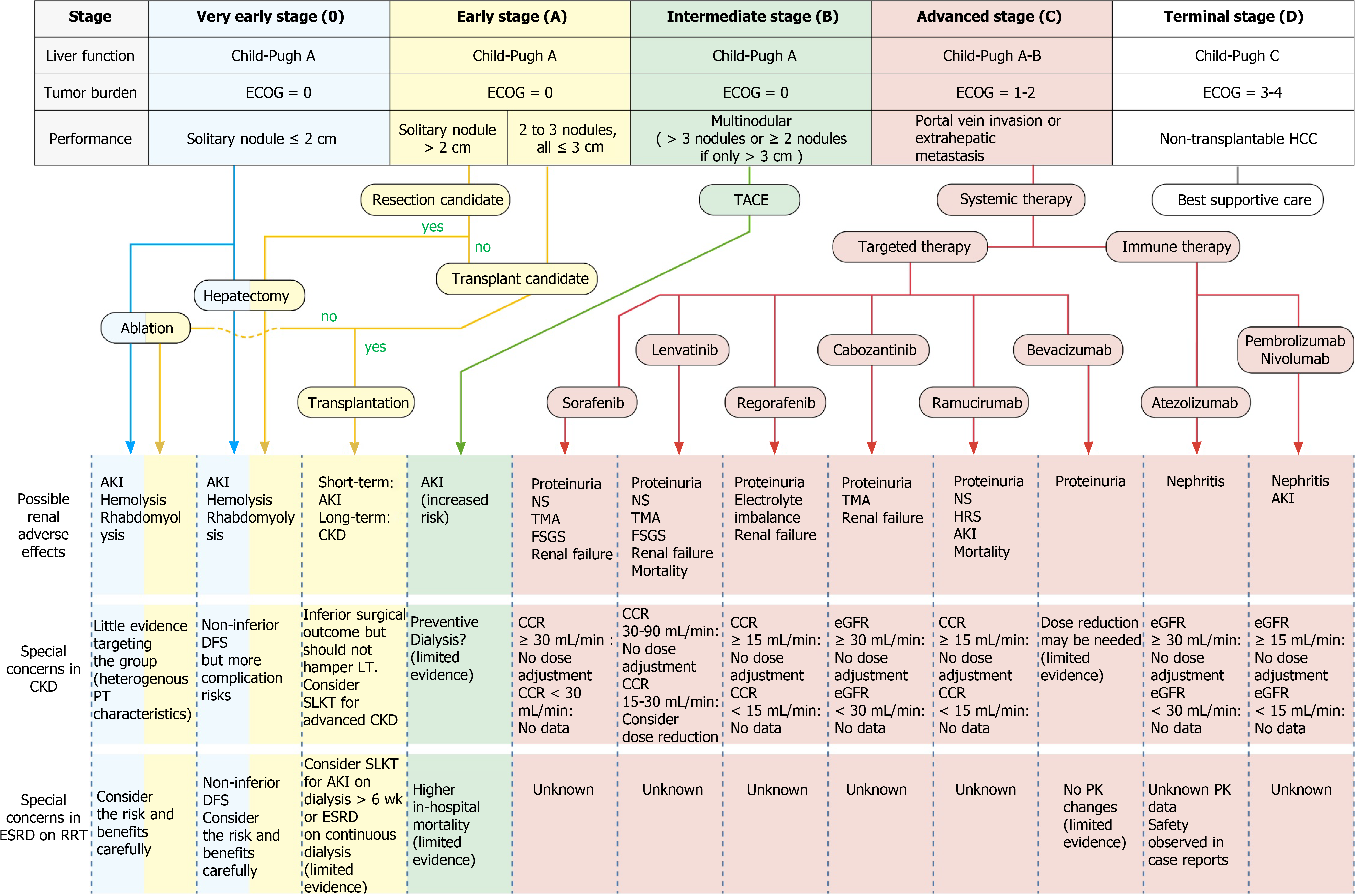Copyright
©The Author(s) 2021.
World J Gastroenterol. Jul 14, 2021; 27(26): 4104-4142
Published online Jul 14, 2021. doi: 10.3748/wjg.v27.i26.4104
Published online Jul 14, 2021. doi: 10.3748/wjg.v27.i26.4104
Figure 2 Current treatment algorithmsfor patients with hepatocellular carcinoma and chronic kidney disease.
This figure is based on the Barcelona Clinic Liver Cancer algorithm, which classifies patients into five stages taking not only the tumor burden but also the extent of liver dysfunction and the patients’ performance status into consideration. Described in the table are the indications for each stage of hepatocellular carcinoma treatment, the treatment-related renal adverse effects, and special concerns for patients with pre-existing renal dysfunction in the applying aggressive treatments and the use of the systemic target and immunotherapy. The disease-free survival is compared to the general population without renal impairment. ECOG: The Eastern Cooperative Oncology Group performance status; HCC: Hepatocellular carcinoma; CKD: Chronic kidney disease; ESRD: End stage renal disease; RRT: Renal replacement therapy; AKI: Acute kidney injury; PT: Patient; LT: Liver transplantation; SLKT: Simultaneous liver kidney transplantation; DFS: Disease-free survival; NS: Nephrotic syndrome; TMA: Thrombotic microangiopathy; FSGS: Focal segmental glomerulosclerosis; CCR: Creatinine clearance (mL/min calculated per the Cockcroft-Gault formula); eGFR: Estimated glomerular filtration rate (mL/min/1.73 m2); PK: Pharmacokinetics.
- Citation: Yeh H, Chiang CC, Yen TH. Hepatocellular carcinoma in patients with renal dysfunction: Pathophysiology, prognosis, and treatment challenges. World J Gastroenterol 2021; 27(26): 4104-4142
- URL: https://www.wjgnet.com/1007-9327/full/v27/i26/4104.htm
- DOI: https://dx.doi.org/10.3748/wjg.v27.i26.4104









